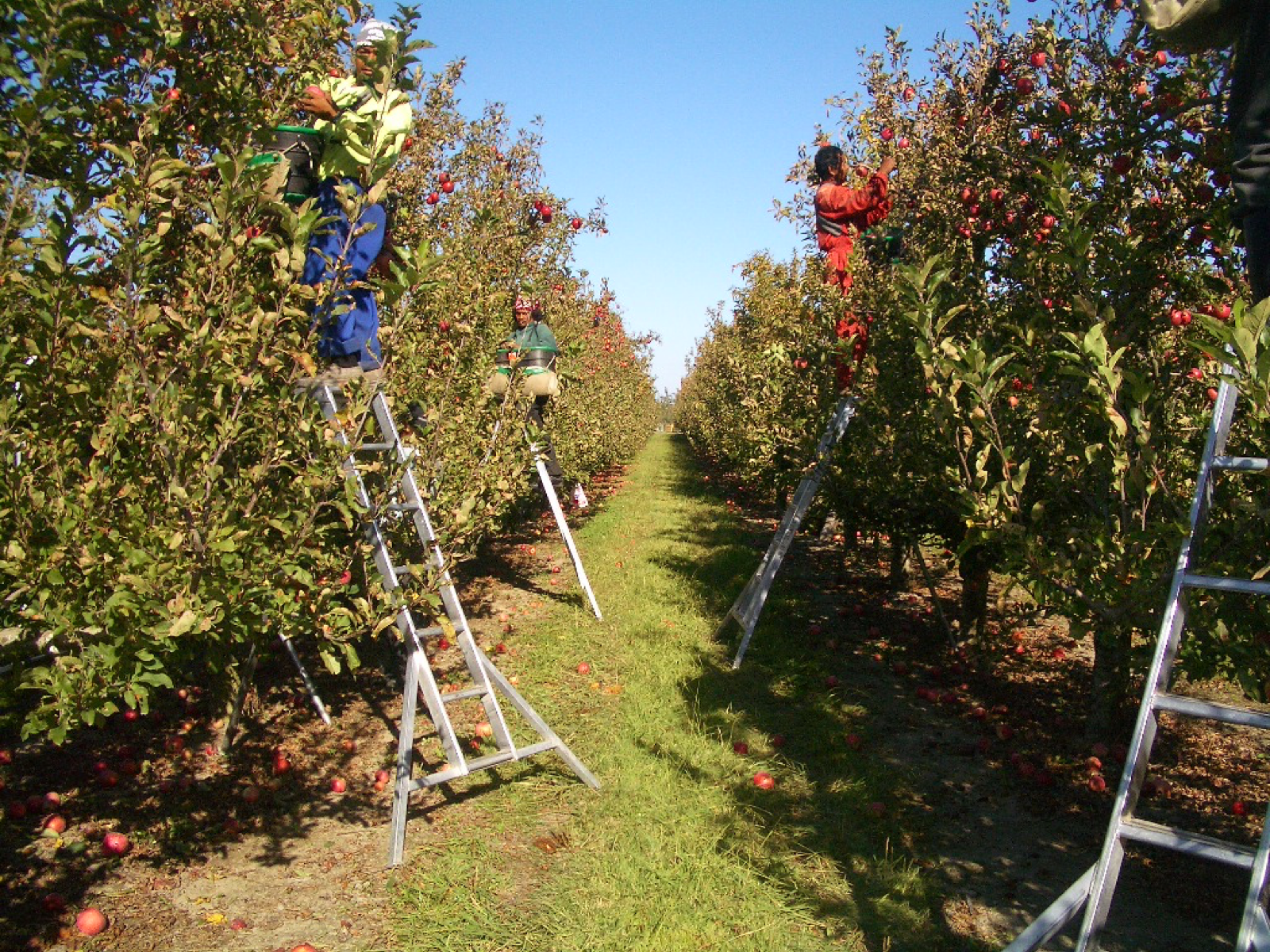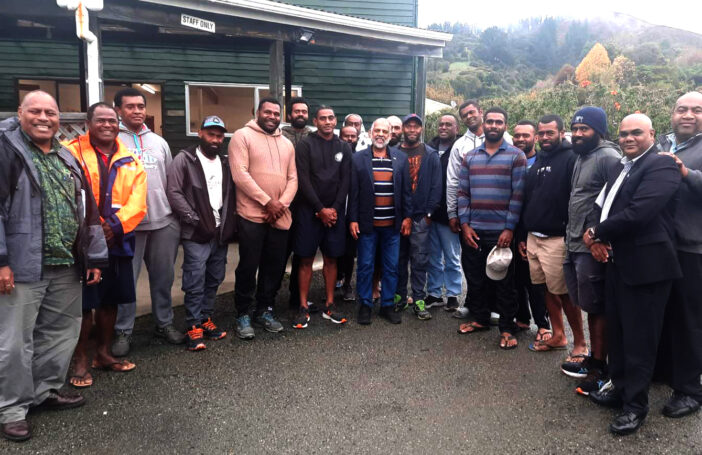Samoa has consistently been one of the top three suppliers of labour under New Zealand’s Recognised Seasonal Employer (RSE) scheme since its introduction in 2007. During the COVID-19 pandemic, when only a small number of Pacific countries participated in the 2021 border exceptions and subsequent quarantine-free travel arrangement, Samoa’s dominance, alongside Vanuatu’s, has strengthened (Figure 1).
Samoa also participates in Australia’s Seasonal Worker Programme (SWP) and the longer term Pacific Labour Scheme (PLS) – now aligned under the single Pacific Australia Labour Mobility (PALM) scheme. During the pandemic, the numbers of Samoan workers heading offshore for PALM employment have grown substantially. For the Samoan government, the recent increase in people leaving the country for temporary work is causing some concern.

Pre-COVID, the numbers of Samoan workers participating in the RSE scheme were slowly but steadily increasing year-on-year, reaching a total of just over 2,400 in 2019-20. In any given year, Samoans would account for 15-20% of total RSE arrivals.
With the pandemic, that has changed. In 2021-22, Samoa sent 3,334 RSE workers to New Zealand – almost 1,000 more workers than were recruited in 2019-20. As one of the few labour supply countries, Samoa’s share jumped to 35% of total RSE arrivals (9,423) in that year.
RSE employers with little or no previous experience in recruiting from Samoa sourced their workers from the country in 2021-22 when unable to recruit from their usual source country(s) due to COVID-related restrictions. Of the 64 employers who recruited Samoan workers, 25% (16) were “new” employers who had not recruited from Samoa in any of the previous three seasons.
There was also a much higher incidence of new recruits in the Samoan workforce in 2021-22 than in earlier years. Generally, employers prefer to recruit return workers because they have acquired the relevant skills and experience to do the job, and are therefore more productive than new recruits. In 2019-20, for instance, 73% (1,765) of the 2,408 Samoans recruited were experienced returnees.
In 2021-22, however, almost two-thirds (63%) of the 3,334 workers recruited were inexperienced workers taking up RSE employment for the first time. This increase was driven by several factors:
- the 926 extra workers recruited in 2021-22, over and above the number (2,408) recruited in 2019-20
- experienced Samoan RSE workers still in New Zealand on visas issued pre-COVID or under the 2021 border exceptions (on 25 May 2022, 755 Samoan workers were still onshore on visas issued in 2019-20 or in early 2021)
- COVID-related travel restrictions prevented RSE employers from travelling to Samoa to select workers; recruitment was instead handled by officials in the Labour Sending Unit
- the loss of some experienced RSE workers to employment opportunities in Australia.
For RSE employers, the high incidence of new recruits in 2021-22 will likely have impacted overall worker productivity. More time and resources will also have been invested in training new recruits than is the practice in a normal RSE season. Nevertheless, the upside is that employers now have a large pool of over 3,300 experienced RSE workers to draw on for the 2022-23 season, an attractive prospect as employers plan ahead for their future recruitment.
New Zealand is only part of the story; Australia is another.
Samoa’s participation in Australia’s SWP and PLS was relatively limited in the years preceding the pandemic. Before March 2020 when Australia closed its international border in response to COVID-19, fewer than 700 SWP visas were granted each year to Samoan workers, accounting for around 5% of annual SWP visa grants. Under the PLS, fewer than 200 visas in total were granted to Samoan workers between 2018 and 2020 (Figure 2).

When Australia resumed recruitment of SWP and PLS workers in late August 2020, following a five-month period of COVID-related travel restrictions, Samoa was one of the countries prepared to mobilise workers. Subsequently, Samoa has experienced significant growth in SWP and PLS numbers.
In 2021-22, over 2,000 visas were granted to Samoan workers for seasonal employment, an increase of 196% from their previous maximum of 677 in 2018-19. While in earlier years Samoa accounted for around 5% of total annual SWP visa grants, in 2021-22 their share was 21% of the total 9,702 visas granted.
Under the longer term PLS visa, the rapid growth in Samoa’s numbers is even more stark. In 2019-20 only 162 PLS visas were granted to Samoans. In 2021-22, 1,346 PLS visas were granted, an increase of 730%. As with the SWP, Samoans accounted for 20% of the total 6,603 PLS visas granted in 2021-22, mainly taking up roles in meat processing and horticulture.
When the numbers under the Australian and New Zealand schemes are combined, over 6,600 Samoans were recruited during 2021-22 – more than double the total number (3,114) of Samoans recruited for the three schemes in 2019-20.
Looking ahead, there is no shortage of demand for Pacific labour, including from Samoa:
- New Zealand has recently increased the annual RSE cap to 19,000 and introduced a number of sector agreements with some, such as meat and onshore seafood processing, having a Pacific focus.
- Australia has around 29,000 workers from the Pacific and Timor-Leste currently onshore under the PALM scheme, with plans to grow the scheme to over 35,000 workers in 2023.
- Other opportunities, such as employment for 1,000 Samoan workers with StarKist in American Samoa under an RSE-type arrangement, are also under consideration.
With the rapid growth, and potential for further increases, in labour migration numbers, it comes as no surprise that the Samoan government has commissioned a review into the country’s participation in the New Zealand and Australian schemes. Processes for worker selection – historically, largely left to accredited employers – are under review, along with an examination of some of the impacts of the loss of labour on Samoa’s domestic labour force.
The Samoan government has also elected to impose a maximum limit of three-year contracts on Samoan workers participating in the PALM scheme, rather than allowing workers to remain for up to four years – the current maximum under PALM policy settings.
Beginning today, Samoa will host the 2022 Pacific Labour Mobility Annual Meeting (PLMAM), an event that brings together stakeholders from across the Pacific region, including New Zealand and Australia, to advance regional cooperation on labour mobility. PLMAM will be an ideal opportunity for Samoan officials to further reflect, in dialogue with other country partners, on their engagement in the Pacific labour schemes and on their future priorities.




